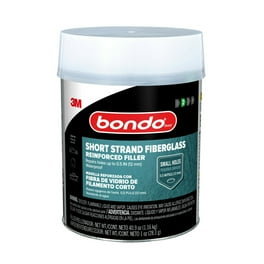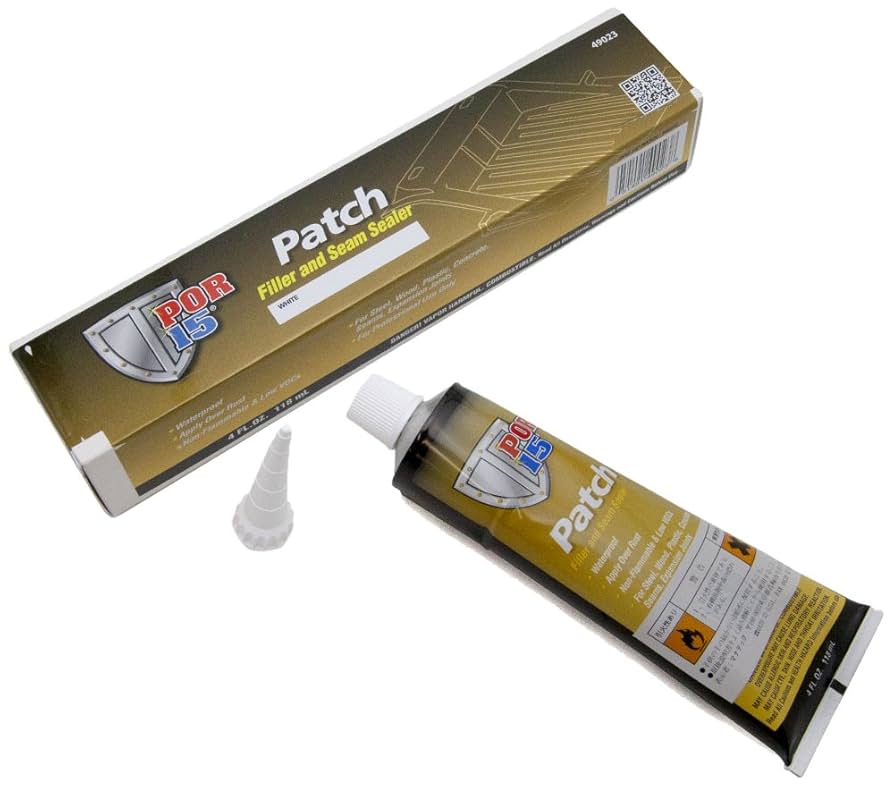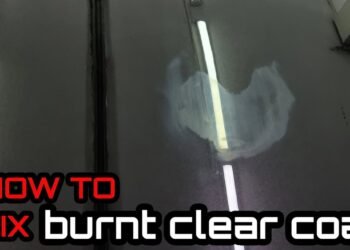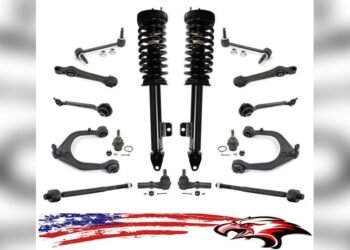If you’re tackling rust or dents on your vehicle or metal project, you’ve probably wondered: can you apply Bondo over POR-15? Getting this right is crucial.
Using Bondo over POR-15 can save you time and effort—but only if you prepare the surface properly. In this guide, you’ll discover exactly how to make Bondo stick firmly over POR-15 coatings, avoid common mistakes, and achieve a smooth, durable finish.
Keep reading to learn the simple steps that will help you get professional results and make your repair last longer. Your project deserves nothing less.
Bondo Vs Por 15
Bondo and POR 15 are popular products for repairing and protecting metal surfaces. Both have unique features that suit different needs. Understanding their differences helps in choosing the right product for your project.
Material Properties
Bondo is a two-part body filler made from polyester resin and a hardener. It creates a thick paste that hardens quickly. POR 15 is a rust-preventive coating with a high-gloss finish. It bonds directly to rusted metal and stops corrosion.
Use Cases
Bondo is best for filling dents, holes, and surface imperfections on cars and metal objects. It can be sanded smooth and painted over. POR 15 works well for protecting metal from rust and corrosion, especially in harsh environments. It is commonly used on frames, tanks, and tools.
Durability Comparison
Bondo provides a strong, sandable surface but can crack under heavy stress or moisture. POR 15 offers superior rust protection and long-lasting durability. It resists chipping and peeling better than Bondo. For long-term metal preservation, POR 15 is more reliable.

Credit: www.tgoldkamp.com
Surface Preparation
Proper surface preparation is essential before applying Bondo over POR-15. It ensures strong adhesion and a smooth finish. Skipping these steps can cause peeling, cracking, or poor bonding. Follow clear, simple techniques to get the best results on your repair project.
Cleaning Techniques
Remove all dirt, grease, and wax from the surface. Use a degreaser or soap with water for cleaning. Rinse thoroughly and let the area dry completely. Avoid touching the cleaned surface with bare hands afterward. A clean surface helps Bondo stick better and last longer.
Sanding For Adhesion
Sand the POR-15 surface using medium-grit sandpaper, around 80 to 120 grit. This roughens the glossy finish, creating a good “tooth” for Bondo to grip. Sand evenly across the repair area without leaving shiny spots. After sanding, wipe the dust off with a clean cloth.
Rust Removal Tips
Check carefully for any rust spots before applying filler. Remove rust using a wire brush or sandpaper until bare metal shows. For deep rust, use a rust converter or remover to stop spread. Make sure the surface is dry and clean before continuing with Bondo application.
Applying Bondo Over Por 15
Applying Bondo over POR 15 requires careful preparation and technique to achieve a smooth, durable finish. POR 15 is a rust-preventive coating, so the surface must be ready for Bondo to adhere properly. The process includes mixing, applying, and shaping the filler to match the repair area perfectly.
Mixing Instructions
Start by using the correct ratio of Bondo and hardener. Place a small amount of Bondo on a clean mixing board. Add a pea-sized drop of hardener to the filler. Mix quickly and thoroughly with a spreader until the color is uniform. Avoid mixing too much at once, as it hardens fast.
Application Methods
Use a flexible spreader to apply Bondo over the POR 15 surface. Press firmly but smoothly to fill all dents and imperfections. Spread the filler slightly beyond the damaged area for better adhesion. Work fast and keep the layer thin to prevent cracking.
Shaping And Smoothing
After Bondo hardens, begin shaping with coarse sandpaper. Remove excess filler and create the rough contour. Switch to finer sandpaper for smoothing the surface. Repeat sanding until the repair blends with the surrounding area. Clean dust off before painting or priming.

Credit: www.walmart.com
Applying Por 15 Over Bondo
Applying Bondo over POR 15 requires attention to detail. Avoiding common mistakes ensures a strong, lasting repair. These errors often cause adhesion issues, surface bubbles, or trapped moisture. Knowing what to avoid helps achieve a smooth, durable finish.
Adhesion Problems
Adhesion problems happen when Bondo does not stick well to POR 15. This usually occurs because the surface is not properly prepared. Always sand the POR 15 coating lightly to create a rough texture. Clean the surface to remove dust and grease before applying Bondo. Skipping these steps leads to poor bonding and flaking.
Surface Bubbles
Surface bubbles appear when air or contaminants get trapped under the filler. Mixing Bondo too fast or too slow can cause air pockets. Apply the filler in thin layers to avoid bubbles. Check the surface for dust or oil that may create bubbles. Smooth the filler carefully to remove trapped air before it hardens.
Moisture Traps
Moisture trapped under Bondo and POR 15 causes rust and damage. Make sure the metal is completely dry before applying POR 15. Avoid applying Bondo on damp surfaces. Moisture can also come from humidity or rain, so work in a dry area. Proper drying prevents rust and improves the repair’s lifespan.

Credit: www.amazon.com
Frequently Asked Questions
Can You Weld Over Por-15?
You should remove POR-15 before welding. Its coating prevents proper weld penetration and causes weak joints. Sand off POR-15 thoroughly for safe welding.
Will Bondo Stick Over Paint?
Yes, Bondo can stick over paint if you thoroughly sand the surface to create proper adhesion. Clean and prep well before application.
Can You Spray Undercoating Over Por-15?
Yes, you can spray undercoating over POR-15. Ensure POR-15 is fully cured and clean before application for proper adhesion.
Should You Paint Over Por-15?
Yes, you can paint over POR-15 after it fully cures. Lightly sand the surface for better paint adhesion. Use a compatible primer and topcoat for best results.
Can Bondo Be Applied Directly Over Por 15?
Bondo can be applied over POR 15 if the surface is clean and sanded for better adhesion.
Conclusion
Applying Bondo over POR-15 requires proper surface preparation. Clean and sand the area well for better adhesion. Spread Bondo evenly and allow it to dry completely. After shaping and sanding, apply primer before painting. Taking these steps ensures a smooth, lasting repair.
This process helps protect metal and improve appearance. Follow these tips for best results on your project.

















